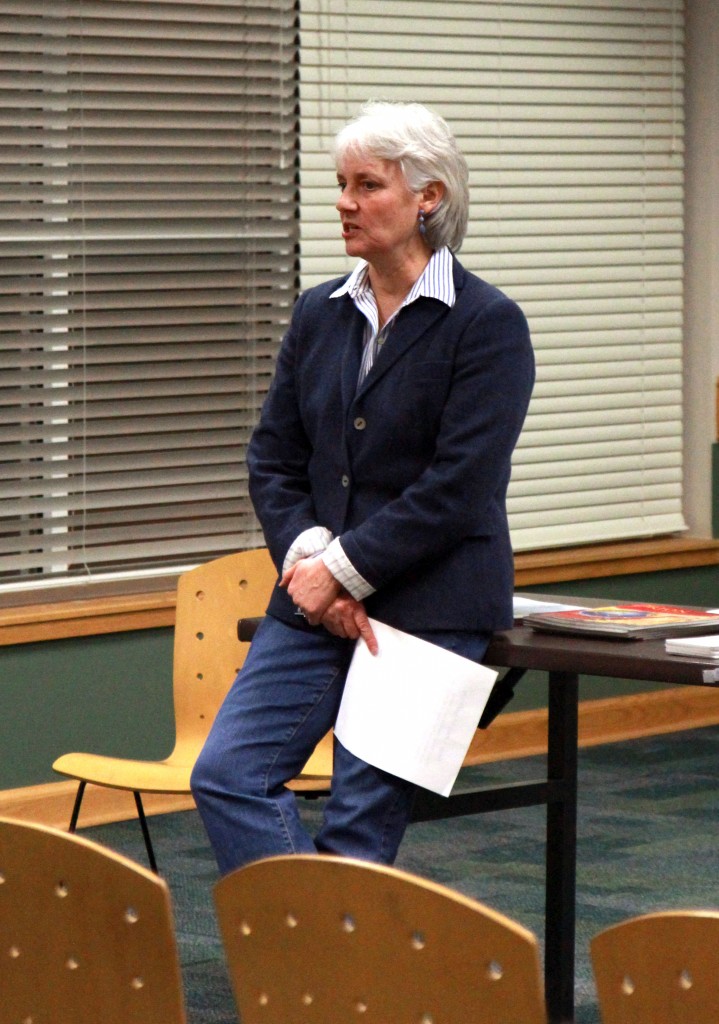
Patti Wood, executive director of Grassroots Environmental Education, lectured on the dangers of living in a toxic environment on Wednesday in the Mohawk Great Room. The presentation remarked on topics like the danger associated with antibiotics and chemicals in hygiene products.
Grassroots Environmental Education, a nonprofit organization, aims to communicate the dangers and health risks associated with exposure to environmental toxins.
The lecture was sponsored by alumni of the College-In-the-Woods community as part of the CIW Program Award for a Better Society. CIW President Marlena Vera-Shockner said the money came from an alumni-endowed fund to support programs with professional speakers on topics that are timely and pertinent to the interests of students.
Wood, the founder of Grassroots Environmental Education, said that one goal of the organization is to help ensure a healthier future for future generations by educating about the toxins that exist in common products,and warn against the dangers that exist in the environment.
“We do not practice fringe science,” Wood said. “We are taking preventative action without scientific certainty. But this doesn’t mean the danger isn’t there.”
Wood’s lecture addressed the risks attributed to hydraulic fracturing, the fluoridation of the water supply and the overuse of antibiotic medication. Wood also discussed other dangerous aspects of common products, such as the chemicals found in shampoos, deodorants and processed food. She encouraged students to take action and stop using the items that she said are made with harmful chemicals.
Wood discussed the dangers of furniture flame retardant, which she said is poisonous, but only prevents something from catching fire for six seconds.
“By law, things like mattresses and upholstered chairs must be flame retardant,” Wood said. “The chemical used to do that is one molecule away from DDT. Every time we sit on our beds or our chairs this chemical is absorbed through our skin into our bodies.”
Wood pointed out that while certain chemicals are advertised as good for the environment, their harm is often overlooked.
The lecture highlighted ways students can make the environment safer.
“We want people to sit up and listen,” Wood said. “We need responsible citizens to mitigate what our generation and our parents’ generation have done to our quality of life. This is a major human rights issue.”
Donald Glauber, an adjunct professor in the health and wellness department, attended the lecture in support of Wood’s mission and to learn more about the environment, a topic he is already invested in.
“I came because I think the issue of toxins in our environment is important but also ignored,” Glauber said. “What’s really toxic is apathy and complacency. Students need to learn how to say no to what is bad for them.”
At the end of the lecture, Wood admitted that she presented plenty of information to absorb, but implored students to change even small parts of their routines to make them healthier.
Aram Kim, a sophomore majoring in environmental studies, attended Wood’s lecture, and hopes to apply it to her life.
“Being that I am an environmental studies major, I am very interested in this topic,” Kim said. “I definitely learned a lot from her lecture. I plan on taking into consideration everything she talked about and at least changing the small things that I can.”


